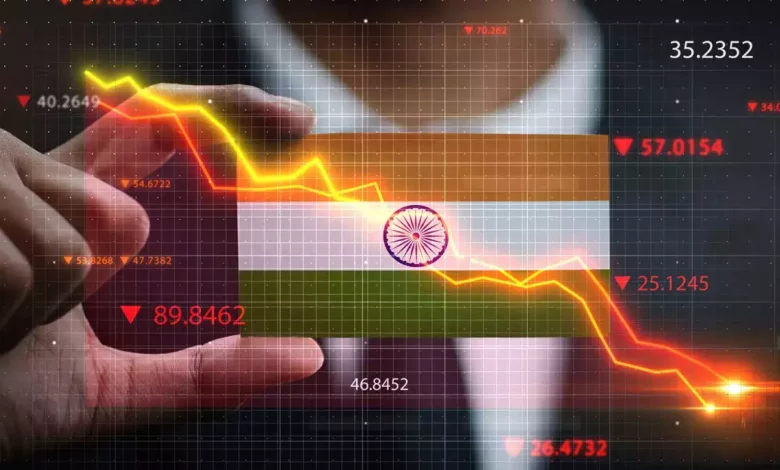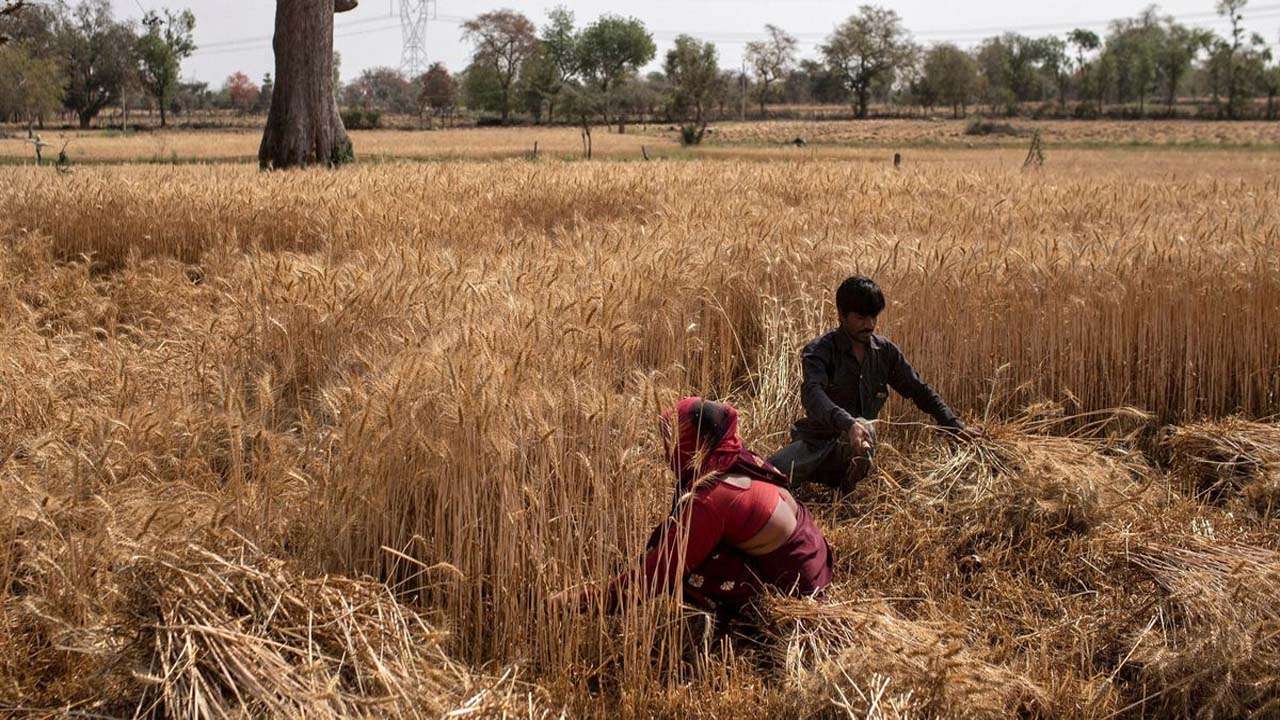The Impact Of The Ukrainian War On The Indian Economy

The Impact Of The Ukrainian War On The Indian Economy
The Indian Rupee lately dropped a record low of 77.9 against the US Bone amid growing volatility in domestic stock requests. Two crucial factors are the cause of this decline in the value of the Indian Rupee. First, is the current account deficit that Indian frugality has made over the times. Second, the decline in Foreign Direct Investment( FDI) is due to the outpour of investors to safe places like the United States due to the ongoing war in Ukraine.
India has also banned the import of wheat, putting its security at threat as the war intensifies. This has caused great concern among transnational stakeholders The ban on wheat in India has led to a 6 percent increase in wheat prices as Ukraine, the world’s leading food handbasket, is unfit to supply the world with agrarian products.
Some judges believe that despite the current extremity, Indian frugality will record high growth rates due to the “ strong profitable situation in India ” — the advanced duty collection, the growing deals of the service sector, and the spirit of internal request confidence due to continued domestic demand. But current developments suggest that Indian frugality has had a negative impact due to the war. The war has strengthened the threat to Indian frugality at home by combining fiscal problems — the gaps in the force chain of diurnal consumer goods, in addition to rising commodity affectation, have weakened Indian frugality.
The Ukrainian war has stressed that the Indian frugality isn’t vulnerable to transnational shocks- the Indian request frugality is nearly linked to the global request, reflecting complex confidence. Although the Indian request relies on energy moment, the war has given India the occasion to reevaluate its precedences and try to move from energy-grounded frugality to a green bone reducing its dependence on the private sector.
Indian Frugality in Trouble
India” opened” its frugality in 1991, taking the first step in global trade. harmonious growth in the Information and Technology( IT) sector and the major service sector increased India’s Gross Domestic Product( GDP), which helped India to see high growth rates throughout the 1990s and 2000s. still, the real low income per capita, high poverty rate, and dependence on energy deals, coupled with continued reliance on a stable agrarian sector, were the Achilles ’ dependence of India’s frugality in late 2010.
India has to reevaluate its precedences and move from energy-grounded frugality to a green bone reducing its dependence on popular regions.
Although India’s frugality has continued to grow due to high GDP situations, India’s periodic budget deficiency has risen sprucely than a sprinkle of profitable benefits affecting the poor with the general effect of a” retardation”. This has widened the ocean between rich and poor smaller people enjoying the benefits of growth, while numerous are being deprived of their profitable benefits.
Indian financial institutions have been hit hard by the impending fiscal extremity as they’ve not been suitable to repay their loans as lenders. The problem of Non-Performing means( NPAs) has aggravated the banking sector, leading to government intervention. Arising banking institutions have been revived by pumping government finances. The reforms have left India’s fiscal institutions void and reveal the true status of the “ rich but financially poor ” Indian class middle class, who had limited access to liquid currency during the recession.
The Impact of War on the Economy
The Russian- Ukrainian war has aggravated the problem of liquidity in the Indian frugality. Consumer spending has been reduced due to limited access to liquidity, substantially due to the epidemic. Big companies are reticent to pump plutocrats into the request when it comes to limited returns, while consumers are reticent to spend plutocrats because of limited access to finance.
Rising crude oil painting prices, coupled with rising oil painting exports, have hit India’s frugality. Domestic food product has surfaced as major trouble to this profitable extremity. Products similar to “ sunflower oil painting, ” extensively grown in Ukraine and grounded in traditional Indian kitchens — have come decreasingly precious as a result of the ongoing war. As India Today reported, “ rising energy prices have hurt food prices, particularly in the deterioration, therefore adding the cost of repairs. ” This cycle has come to inform our understanding of the profitable impact of the Russian- Ukrainian war in India.
The rise in the cost of crude oil painting as a traditional commodity has hurt the Indian consumer as the state has over-emphasized crude oil painting as a commodity over renewable means for times. posterior governments have made limited sweats to turn India into a green frugality. For illustration, buyers in India have had a limited incitement to buy energy-effective electric vehicles despite the current duty immunity due to their high cost. An electric auto costs further than a million rupees in the Indian request at a time when the whole population earns INR. This price hike has led to Indian buyers buying lower energy-effective buses which increases their reliance on natural energies.
The payment obligation has now been transferred to the consumer, with limited capability to finance at a time when banking institutions- the main institutions supporting citizens- are raising interest rates compared to loans to cover themselves from this problem. The strategy comes at a time when the current periodic budget ignores changing realities- structure development systems and civic planning dominate budget expenditures, and profitable support is at stake indeed after the epidemic has been stopped.
Short-Term and Long-Term Reduction Strategies
India can use its power and make on working domestic extremity by getting Russian oil painting to meet its coming energy security conditions. With petroleum-grounded frugality,” India needs oil painting to run the country” as oil painting is a diurnal commodity used by millions and classes likewise. While continuing to support the Russian frugality may continue to condemn India for falling for the Russian camp, it’s India’s interest to buy Russian oil paintings at cheap prices.
The cost of importing energy will go down due to India’s purchase of Russian oil paintings and help the Indian frugality recover after the downturn. Since the “ unheroic revolution ” — designed to make India tone- sufficient in “ comestible oil painting product ” — didn’t achieve the asked results, and comestible oil painting is still a commodity imported, the purchase of Indian oil painting in Russia could guarantee an introductory cuisine component it doesn’t end in Indian kitchens.
Over time, India should reduce its dependence on fossil energies so that it doesn’t get caught up in the war between the West and Russia and — at least not in the question of energy security. India may use a multinational approach to achieve this thing. businesses should consider furnishing one-time support to their most vulnerable populations to alleviate the impact of the current extremity. At the same time, India can strengthen the banking system in India by addressing enterprises about asset quality and tensing bank balance wastes.
Eventually, India may switch to a green frugality by furnishing Special Economic Zones( SEZs) to green businesses. The government could also encourage the productive community to take advantage of the openings available to” India’s economic request.” meetly, manufacturers can choose their products to suit the requirements of Indian consumers — in terms of price and quality — thereby allowing all Indians to have a traditional “ Indian electric auto ”.
edited and proofread by nikita sharma







